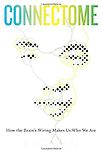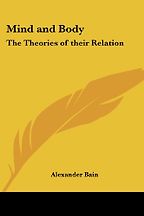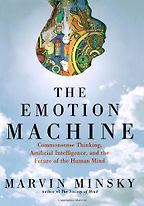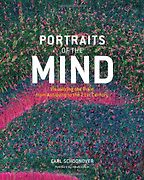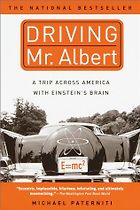When did serious modern brain science begin?
Modern neuroscience really started at the end of the 19th century, when two things happened. One was that scientists divided the brain into a set of regions and assigned functions to each of those regions. For example, one area of the brain is important for language, or the back part of your brain in important for vision. That regional analysis of the brain has continued to the present day and has been enhanced by imaging technology like MRI [magnetic resonance imaging]. The problem is that although MRI can tell us where things happen, it can’t tell us how things happen.
The second discovery of the 19th century was neurons. The argument I make in my book Connectome is that we have to understand each region as a network of a vast number of neurons in order to understand how things happen. We have to move beyond crude measures like the size of a region. What we need to look at instead is the organisation and connections of the neurons into a network.
Can you explain what that recently coined word, “connectome”, means.
Connectome is a map of the brain as a network of neurons. You can imagine it as being a bit like the back pages of those airline magazines where you see maps of flight paths. What you need to imagine is that every city is a neuron, and every flight between cities is a connection. Except in our brains we would need to start with a hundred billion cities and thousands of flights per city. So it is a huge map.
And why are those connections so important, as opposed to the neurons themselves?
Both are important, and we need to know what a single neuron does. But to understand how neurons work together we need to map out the network. One reason that the connectome is important is that our experiences change it. Sometimes the term “wiring diagram” is used instead of connectome to compare the brain to an electronic device. But that is a misleading metaphor, because the wiring of electronic devices is fixed whereas your connectome changes over time. It turns out that every experience changes the connectome, and it is hypothesised that this is how we can store memory. Our memories are encoded in our unique connectomes.
Your book choices look at where some of these theories came from. First up is Mind and Body by the Scottish philosopher Alexander Bain.
This is an obscure reference that most neuroscientists or philosophers will not be familiar with. But it is historically a very important book because Bain is probably the first connectionist. By that I mean the doctrine of connectionism that you have been alluding to, which is that the connections of the brain are extremely important for its functioning. As far as I can tell, he was the first person to propose that you learn things when your connections change. It’s amazing that he proposed that [in 1872], even before neurons were really discovered. He also came up with the first theory of neurocoding, or how the activity of neurons encodes your perceptions or thoughts.
“There is a long tradition of studying the brains of geniuses, especially in the 19th century.”
He said that there are two ways to do this. One is the idea that out of a huge number of neurons there are some subsets that are active at any given point in time, and that these subsets are a kind of code. Then he proposed that the active neurons might be more or less active, so that is an additional way in which information is encoded. It’s a principle which is still used today.
That’s quite amazing considering that he was writing 140 years ago.
Yes, and he came up with these ideas purely by thinking about it. He’s on the boundary line between two ideas. Connectionism is the successor to associationism. Associationism is the doctrine that enables us to understand all psychology – it’s the idea of association between ideas. People like the philosopher John Locke were associationist philosophers. Connectionism can be viewed as assigning material sub-streams to associations. Somehow, the associations between ideas are represented by the connections between neurons. And Bain was the first person to express that idea.
Next you have chosen a very different kind of book, about one of the greatest brains of them all. Driving Mr Albert is an extraordinary story about what happened to Einstein’s brain after he died.
This is a fun book by a journalist, describing his adventures driving across America with pieces of Einstein’s brain in the trunk of his car. Einstein’s brain was stolen after he died by Thomas Harvey, the pathologist who performed the autopsy and then absconded with the brain. There is a long tradition of studying the brains of geniuses, especially in the 19th century. Of course it was natural, because neuroscientists wanted to figure out what was different about the brain of a genius.
Did they find anything?
The obvious thing they studied first in the 19th century was brain size. They wondered if geniuses had larger brains in the same way that athletes are brawnier. But there is the famous case of Anatole France and Ivan Turgenev, which I discuss in my book. Turgenev’s brain weighed two kilograms and Anatole France’s brain weighed one kilogram, which are both within the normal range of human brain sizes. My joke is that although they are both great writers, Anatole France is the one who got the Nobel Prize.
Presumably from your point of view, it’s more about how they use the connections than the size of their brain?
That’s right. We need to look at more refined measures than size, such as the organisation of neurons. Maybe the variance between different kinds of intelligence has to do with the way our brains are wired. But that’s just a hypothesis.
To come back to the mystery of Einstein’s brain – it went missing, but when did it resurface?
Thomas Harvey had the ambition of discovering what was different about Einstein’s brain, but he didn’t have the scientific capability to try and do it himself, so for years he tried to find partners to study it with him. Some papers have come out, but there is nothing conclusive. There’s one theory about the parietal lobe, which is the part of the brain that’s important for spatial reasoning. That area was enlarged in Einstein, and so may explain why he was so good at that type of thing. Ultimately I reject such explanations as overly simplistic. It’s a great story, though, and there’s a wonderful documentary movie about a Japanese professor’s quest to find Einstein’s brain.
Moving onto a different aspect of the brain, how does Marvin Minsky in The Emotion Machine think that we can pin down the true identity of the mind?
Marvin Minsky is famous as one of the fathers of artificial intelligence. The Emotion Machine is a summation of his lifetime of thinking about how the brain works. It is written somewhat as a computer scientist but also as a philosopher and psychologist. He’s a brilliant thinker and a brilliant writer. Most people will not know that he actually started out as a neuroscientist. But he gave up on neuroscience, deciding that if he wanted to understand intelligence in his lifetime he had better not study the brain but try to construct it in computer models.
This follows up on his previous book, The Society of Mind, in which he updates Freud. Freud thought that we can divide the mind into three parts – the id, the ego and the super ego. Minsky argues that we need many more divisions, maybe hundreds. He thinks about the mind as being the society of these hundreds of regions. And this book continues on that theme. But of course, what we’re interested in in neuroscience is not hundreds of regions but billions of neurons. The question is how we can bridge the gap between those two, and he addresses that question a little bit at the end.
Aside from identifying different regions of the brain, is there scope for alternative models about who we are, besides what the brain makes us? Many millions of people believe we have a soul, for instance.
Neuroscience is driven by the hypothesis that we don’t need the soul to explain the mind. We don’t know if that hypothesis is true, but it is the working assumption of all neuroscientists. Ultimately, we can understand the mind as the functioning of material processes. That is the idea of materialism. It’s all physical processes. Or there is the idea of mechanism, that we are nothing more than very complicated machines and our parts are made out of neurons or molecules. I pretty much restrict myself to discussing neuroscience, except in the last chapter of my book when I discuss the possibility of uploading.
What is that?
Uploading is the idea that I can transfer my mind to a computer, and then live happily ever after as a computer simulation.
That’s an exciting thought for some, and truly terrifying for others I’m sure.
Not even terrifying, but for most people just strange! It’s one of the possible routes to immortality that people are thinking about. I call this idea the most contemporary idea of heaven. In some religions, heaven is a place where our souls go after we die. Maybe it’s a pleasant park or something, but we are freed from our bodily existence and our minds somehow waft about – although in some traditions it’s not clear whether it is a purely spiritual existence or some form of reincarnation.
The idea of uploading is that you are transferred from your body to a more ethereal form of existence, a simulation of electrical signals in a computer. I think about it as the modern nerd’s idea of heaven. Some people are afraid of uploading because they think of it as being like a brain in a vat – someone being locked up and unable to move around. But that’s limited thinking. Any society that was advanced enough to simulate a brain ought to be advanced enough to simulate the world around the brain. In fact, you could make that world much better than the world which we live in. You could also re-programme yourself to get rid of all of your bad habits and limitations. In that respect you can be a better version of yourself, which is why it’s like heaven. I want to emphasise that these are all fun dreams, but the real question is whether it can ever be possible.
Is there a debate over whether it would be ethical?
There are so many interesting philosophical and ethical implications to uploading, but I don’t see it happening in the near future so I don’t worry about them. I am more focused on how we can improve our brains, rather than how we can escape them.
Portraits of the Mind
explores the history of the mind through images.
This is a picture book of the brain. In the history of neuroscience, we have certainly struggled with our understanding of the brain. One limitation has been our inability to actually see what the structure of the brain is and see how it works. That has been answered by ever more sophisticated technologies for taking pictures of the brain. Finding connectomes relies upon the most powerful microscope you can imagine, and the power to analyse those images. I describe that in my book, but my book is mainly words. If you want to see the images of the brain which have been so important for science, Portraits of the Mind is a wonderful resource.
Finally tell us about your last choice, The World, the Flesh, and the Devil.
JD Bernal was an Irish crystallographer who wrote this book in 1929. He was contemporaries with people like Aldous Huxley, who wrote Brave New World at around the same time. Clearly biology had progressed to a point where people were thinking about the future of human society, and how it could be affected by biology and biotechnology. Bernal wrote this book to talk about human history.
He painted his ideas with a broad brush, arguing that humanity had three struggles to understand and control: The world, the flesh and the devil. By the world he means the physical world – advances in technology like electricity which involved the knowledge of physics and applications of engineering. The flesh was biology and biotechnology – the ability to understand how life processes work and to control them. And the final challenge, which he called the devil, was to understand and improve our own minds. The devil was the weakness of our minds.
What are your views around free will and the brain? Do we actually have control over our actions, or is it just neurons firing?
You can argue this question from an extremely philosophical point of view about the implications of physics. A physicist might say that the universe is like a huge assembly of billiard balls all bouncing off each other, representing atoms. Everything is determined by the equations which govern those billiard balls. Therefore, free will is an illusion because everything is determined. I think that is an interesting philosophical debate, but it may be a bit distant from the level at which our minds work.
The other notion of free will versus determinism comes from our inability to change ourselves. For example I might smoke cigarettes and want to quit smoking, but I just can’t do it. In principle we know it’s possible to quit, but sometimes it seems almost impossible to change ourselves even if we want to. That is the level where people want neuroscience to have an impact. We know the old-fashioned ways of changing ourselves – the question is whether there are new technologies on the horizon which will enable us to make the changes that we want.
June 27, 2012. Updated: November 25, 2025
Five Books aims to keep its book recommendations and interviews up to date. If you are the interviewee and would like to update your choice of books (or even just what you say about them) please email us at [email protected]
Support Five Books
Five Books interviews are expensive to produce. If you've enjoyed this interview, please support us by donating a small amount.

Sebastian Seung
Sebastian Seung is Professor of Computational Neuroscience at MIT, and the author of Connectome: How the Brain's Wiring Makes Us Who We Are. He has made important advances in robotics, neuroscience, neuroeconomics and statistical physics. His research has been published in leading scientific journals, and has featured in articles in The New York Times, Technology Review and The Economist

Sebastian Seung
Sebastian Seung is Professor of Computational Neuroscience at MIT, and the author of Connectome: How the Brain's Wiring Makes Us Who We Are. He has made important advances in robotics, neuroscience, neuroeconomics and statistical physics. His research has been published in leading scientific journals, and has featured in articles in The New York Times, Technology Review and The Economist

